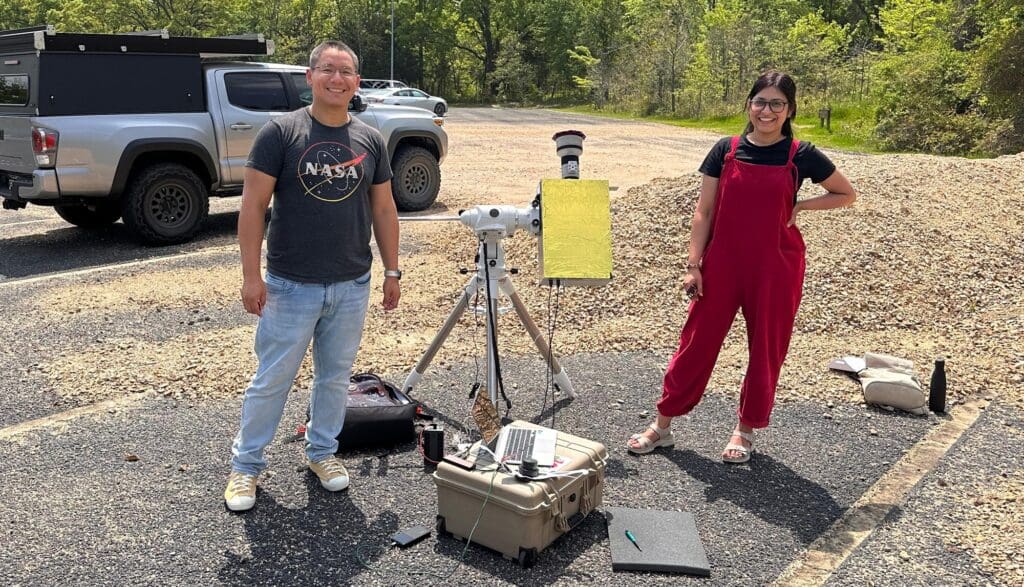Scientists from Aberystwyth and the United States who had travelled to Dallas Texas to study the solar eclipse had to quickly change their plans after cloud cover disrupted them at the last moment.
The team, featuring former and current students from the Solar Systems Physics Group at Aberystwyth University had identified three possible locations in and around the Texan city to record the eclipse as part of an international programme to study space weather.
This latest eclipse was particularly noteworthy as it coincided with the solar maximum, a once in every 11 year occurrence where the Sun’s surface is at its most active.
However, with cloud cover forecast, the team took the decision to travel northeast along the trajectory of the eclipse in the hope of securing a clear view of the event.
Leaving Dallas at the crack of dawn, one crew reached Paris, Texas, whilst the other travelled onto Valliant, Oklahoma, almost three hours away.
Blue sky in Paris provided ideal eclipse-studying conditions whilst a combination of thin high cloud and a passing jet that flew across the corona, disrupted the attempt to collect data in Oklahoma.
The mission was led by Professor Huw Morgan, from the Solar Physics Group at Aberystwyth University.
He said: “Given the cloud cover and changing weather forecast for the time of the eclipse, the team from Aberystwyth did remarkably well to record this event. Not only did they need to change their plans at the last minute, they were able to find alternative locations and set up the equipment in time to take the necessary measurements and provide data that helps us to understand more about what is happening on the sun and space weather.”
The team was using cameras developed at Aberystwyth University by Dr Matt Gunn, and funded by UKRI’s Science and Technology Facilities Council.
Dr Gunn was recently commissioned to build Enfys, a key instrument for the European Space Agency’s Exo-Mars rover.
The equipment used also provided a testbed for technology that could enable scientists to view solar eclipses from space as part of the proposed forthcoming Moon-Enabled Solar Occultation Mission (MESOM), where scientists at Aberystwyth University are working with researchers at the UCL and Surrey University.
Designed to orbit the moon, the mission will enable scientists to study solar eclipses on a monthly basis, with each eclipse lasting between 20 and 30 minutes.
Such a mission would avoid problems with cloud cover.
The Aberystwyth led team studying the solar eclipse on Monday 8 April were Nathalia Alzate (NASA, PhD from Aberystwyth University), Simone Di Matteo (NASA), Gabriel Muro (Caltech, PhD from Aberystwyth University), and Brad Ramsey and Harshita Gandhi, both current PhD students at Aberystwyth University.

